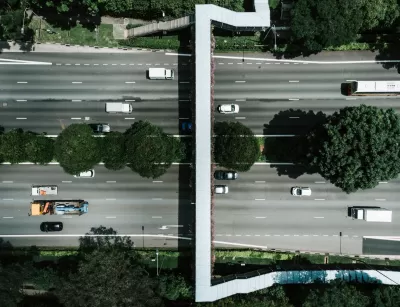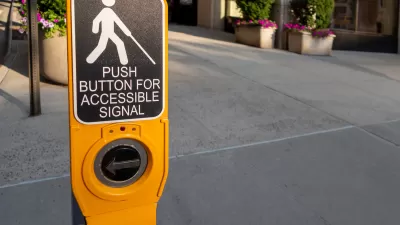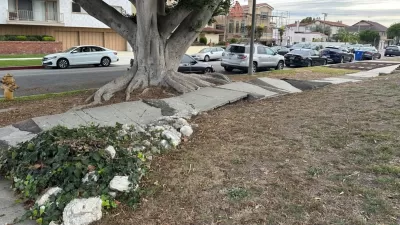Here are four urban planning fails that should be near the top of the list as professionals assess what to address in 2020 and 2021.

When urban planners envision their work for the 21st century, many often say it'll begin with fixing the shortcomings put in place in the 20th century. However, the question remains whether professionals can make those changes quickly enough to avoid the worst consequences of their mistakes. Here are four urban planning fails that should be near the top of the list as professionals assess what to address first.
1. Inattentiveness to Women's Needs
In Hollywood and broader pop culture, the #MeToo movement highlighted how women too often deal with unwanted sexual attention or requests. An actress might feel pressured to sleep with a film's director after he promised he'd give her the lead role or another opportunity to advance her career. There's a brighter spotlight on the difficulties women face in that regard, but not enough attention on the unfavorable conditions created by poor urban planning.
For example, the rise of sprawling urban suburbs often means a single mother lives and works too far away from where her child attends school. Poorly maintained parks become hotspots for crime, meaning women may not feel safe going there alone. It's a similar story for entertainment and nightlife districts. Many get developed under the assumption women will go there with male partners, and not unaccompanied.
2. Inadequate Infrastructure for Pedestrians
During the coronavirus pandemic, some government leaders have advised people to avoid public transit, explaining that they were less likely to become infected while outdoors in large spaces with plenty of room for physical distancing. Getting around on foot seemed like the best option in those circumstances, but many people found it was not so simple.
In countries around the world, pedestrians account for thousands of traffic-related deaths per year. Some cities now feature sensor-equipped crosswalks that give everyone more visibilities. Officials are also cracking down on speeding, with some opting to install more cameras to catch over-the-limit driving. Speeding is not the only factor causing the fatalities, but it's a prominent one.
In Bengaluru, India, walking is a primary mode of transportation, but a hazardous one. Research showed that only 9% of the intersections there had pedestrian crossings. Moreover, people could not use at least a quarter of the footpaths due to poor conditions and a lack of upkeep. Such shortcomings are, unfortunately, not limited to that one city or to India itself.
3. Construction Site Dangers to Passersby
When city officials grant permission to start working on a new construction process, those involved must take specific precautions, such as installing temporary fencing around the work area and posting signs warning people to stay out. Storing equipment properly during off-hours is essential, too. Keeping the machines in a dedicated storage yard protects them from the elements and eliminates the possibility of people tampering with or trying to steal the assets.
Confining construction equipment to a restricted area is a great start, but maintaining safe practices doesn't stop there. Dangers emerge from above, too. In 2019, a woman walking along Boston's North End waterfront sustained critical injuries from a falling piece of metal from a construction. After that happened, several pedestrians commented that they did not feel safe walking under scaffolding or avoided walking near where work occurred.
In Queens, N.Y., a piece of falling plywood struck and killed a female pedestrian. City council member Peter Koo commented, "Such a horrific tragedy should never happen to anyone who is simply walking down the sidewalk, and it is a clear example of why building owners and city agencies need to ensure building facades are safe, especially during periods of high winds."
4. Smart Cities Overlooking the Disabled
As today's cities get more advanced, urban planning sometimes falls short with inclusivity. The issue may start as people research what smart tech to use in particular locations. A poll of entrepreneurs from tech incubators found only 18% of them confirmed they knew of smart city initiatives that aligned with international standards for technological accessibility.
Another problem is that the development process often does not include enough input from disabled people themselves. The people responsible for making city improvements might get feedback from an area's residents, but there's no guarantee that the studied segment includes the voices of people with disabilities. For example, a touch-sensitive screen for bus ticket sales might seem high-tech, but can wheelchair users with fine-motor difficulties use it?
Sara Hendren, an artist and design researcher, recently wrote a book about how amenities in the world can affect a body's abilities or challenges. In it, she stated, "Ability and disability may be in part about the physical state of the body, but they are also produced by the relative flexibility or rigidity of the built world."
The Urban Planning Sector Must Take Decisive Action
These four urban planning shortcomings are undoubtedly major mistakes, and even the most dedicated people cannot fix them quickly. Recognizing that these problems exist is half the battle. Making progress in solving them means committing to facilitating positive, meaningful changes moving forward.
That starts with infrastructure professionals opening dialogues with the people directly affected by these problems. That means talking to women who say they don't feel safe in cities or find it too hard to navigate them without cars. It requires getting input from pedestrians and hearing about the difficulties and dangers they face by merely trying to reach their destinations.
Reaching out to disabled people is crucial, too. People commonly think that not seeing such individuals trying to use services or enter buildings means they don't exist. They do, but may feel too overwhelmed by the perception that the modern world does not accommodate them enough.
There is no single solution to these problems. However, learning more about them and taking prompt, relevant action are excellent starting points.

Planetizen Federal Action Tracker
A weekly monitor of how Trump’s orders and actions are impacting planners and planning in America.

Map: Where Senate Republicans Want to Sell Your Public Lands
For public land advocates, the Senate Republicans’ proposal to sell millions of acres of public land in the West is “the biggest fight of their careers.”

Restaurant Patios Were a Pandemic Win — Why Were They so Hard to Keep?
Social distancing requirements and changes in travel patterns prompted cities to pilot new uses for street and sidewalk space. Then it got complicated.

Platform Pilsner: Vancouver Transit Agency Releases... a Beer?
TransLink will receive a portion of every sale of the four-pack.

Toronto Weighs Cheaper Transit, Parking Hikes for Major Events
Special event rates would take effect during large festivals, sports games and concerts to ‘discourage driving, manage congestion and free up space for transit.”

Berlin to Consider Car-Free Zone Larger Than Manhattan
The area bound by the 22-mile Ringbahn would still allow 12 uses of a private automobile per year per person, and several other exemptions.
Urban Design for Planners 1: Software Tools
This six-course series explores essential urban design concepts using open source software and equips planners with the tools they need to participate fully in the urban design process.
Planning for Universal Design
Learn the tools for implementing Universal Design in planning regulations.
Heyer Gruel & Associates PA
JM Goldson LLC
Custer County Colorado
City of Camden Redevelopment Agency
City of Astoria
Transportation Research & Education Center (TREC) at Portland State University
Camden Redevelopment Agency
City of Claremont
Municipality of Princeton (NJ)






























